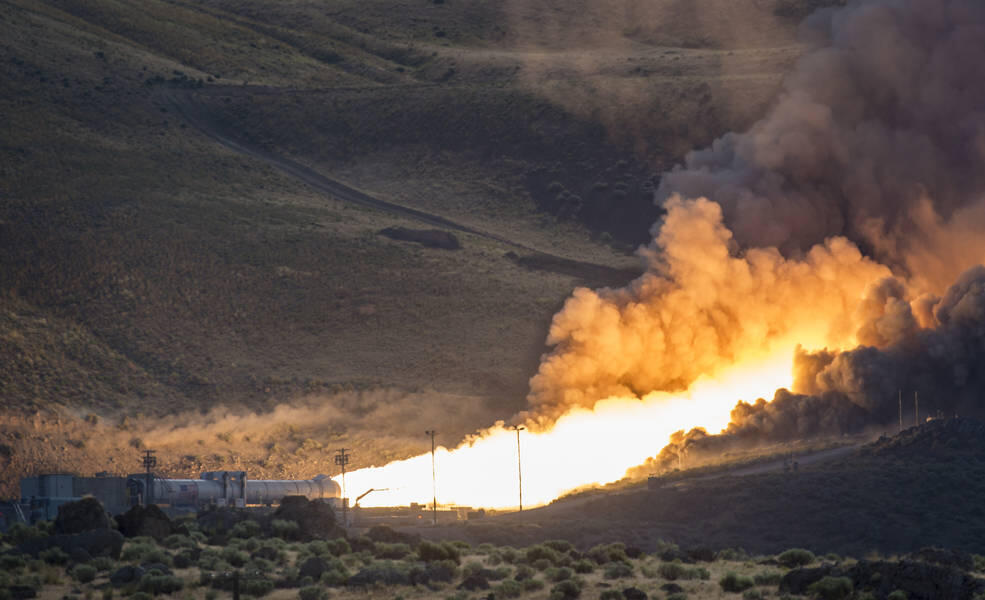A booster for the most powerful rocket in the world, NASA’s Space Launch System (SLS), successfully fired up Tuesday for its second qualification ground test at Orbital ATK’s test facilities in Promontory, Utah. This was the last full-scale test for the booster before SLS’s first uncrewed test flight with NASA’s Orion spacecraft in late 2018, a key milestone on the agency’s Journey to Mars.
“This final qualification test of the booster system shows real progress in the development of the Space Launch System,” said William Gerstenmaier, associate administrator for the Human Exploration and Operations Mission Directorate at NASA Headquarters in Washington. “Seeing this test today, and experiencing the sound and feel of approximately 3.6 million pounds of thrust, helps us appreciate the progress we’re making to advance human exploration and open new frontiers for science and technology missions in deep space.”
The booster was tested at a cold motor conditioning target of 40 degrees Fahrenheit –the colder end of its accepted propellant temperature range. When ignited, temperatures inside the booster reached nearly 6,000 degrees. The two-minute, full-duration ground qualification test provided NASA with critical data on 82 qualification objectives that will support certification of the booster for flight. Engineers now will evaluate these data, captured by more than 530 instrumentation channels on the booster.
When completed, two five-segment boosters and four RS-25 main engines will power SLS on deep space missions. The solid rocket boosters, built by NASA contractor Orbital ATK, operate in parallel with SLS’s main engines for the first two minutes of flight. They will provide more than 75 percent of the thrust needed for the rocket and Orion spacecraft to escape Earth’s gravitational pull.
“Today’s test is the pinnacle of years of hard work by the NASA team, Orbital ATK and commercial partners across the country,” said John Honeycutt, SLS Program manager at NASA’s Marshall Space Flight Center in Huntsville, Alabama. “SLS hardware is currently in production for every part of the rocket. NASA also is making progress every day on Orion and the ground systems to support a launch from Kennedy Space Center in Florida. We’re on track to launch SLS on its first flight test with Orion and pave the way for a human presence in deep space.”
The first full-scale booster qualification ground test was successfully completed in March 2015 and demonstrated acceptable performance of the booster design at 90 degrees Fahrenheit – the highest end of the booster’s accepted propellant temperature range. Testing at the thermal extremes experienced by the booster on the launch pad is important to understand the effect of temperature on how the propellant burns.
The initial SLS configuration will have a minimum 70-metric-ton (77-ton) lift capability. The next planned upgrade of SLS will use a powerful exploration upper stage for more ambitious missions, with a 105-metric-ton (115-ton) lift capacity. In each configuration, SLS will continue to use the same core stage and four RS-25 engines.
Source: NASA











